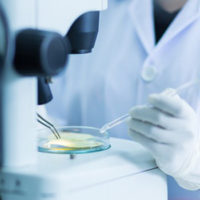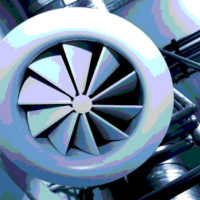Consumer complaints are often related to the presence of foreign material in food products and other consumer products. The foreign material has to be identified for safety reasons, as well as to maintain good customer relations. The foreign material may be present as small particles, requiring analysis techniques that are suitable to these sizes. Examination of the foreign material using a stereomicroscope can provide preliminary identification of the unknown material and informs selection of the proper method for further analysis of the particle. Most importantly, the stereomicroscopic examination may provide information about how the particle was generated, and whether it was incorporated into the product during manufacturing or inserted by the customer.
Stereomicroscopes are low magnification, binocular microscopes that provide a 3D image of a sample. Compared with other instruments, they are low cost and easy to use. They have a large working distance, and can be mounted on a free-swinging arm to allow for examination of larger samples. The working distance also provides room for sample isolation and preparation of small particles for subsequent analyses. Stereomicroscopes can be used with several methods of illumination to best observe a sample, including oblique or side light, reflected light (coaxial or top light), and transmitted light.
Types of Contaminants
Small metal particles are sometimes generated as wear particles or shavings from machinery used in manufacturing. When seen with the naked eye, fine metal particles often appear as black specks, but when examined using a stereomicroscope, these particles have a shiny, reflective appearance; they are also hard and opaque. Some iron and steel particles have a positive response to a magnet. If a metal particle is observed in a product, the particle is prepared for analysis using a scanning electron microscope (SEM) equipped with energy dispersive X-ray spectrometry (EDS). The EDS spectrometer provides an elemental profile of the particle, which can be used to determine the alloy. Iron and steel corrosion may be orange to brown to black in color and may not be immediately identified as metal, but SEM/EDS may be used to confirm the presence of iron and steel elements.
Glass is a potentially alarming contaminant in food products. Glass particles are hard and transparent, and have conchoidal fracture (smooth, curved breakage with no cleavage) surfaces. When viewed using a stereomicroscope, glass particles are often visually similar to larger broken glass fragments. Glass particles are typically analyzed using SEM/EDS, which determines the elemental composition of the oxides present and can provide a classification of most glasses. If a suspect source of glass is identified, the elemental profile of the samples can be compared. Glass particles should also be characterized using higher-magnification polarized light microscopy (PLM) to determine the refractive index and other optical properties, such as isotropism or birefringence. For example, some silicate based minerals have elemental profiles that are similar to glass, but are crystalline and have different optical properties when examined using PLM.
Practical Examples
In some cases, what appears to be foreign material is actually product material that has been thermally degraded (burned) or compressed in some way. One example is material found in a food product that was returned to the manufacturer by the customer, who thought it was either plastic or glass. The suspect material was white with brown edges and had a compacted, brittle consistency. The particle was not visibly similar to glass, and could not be immediately identified by its physical appearance. When probed with a small razor, it was brittle and powdery—not hard, like glass, or pliable, like most polymers. The particle was prepared for analysis using Fourier transform infrared spectroscopy (FTIR) equipped with a microscope accessory; the material was found to consist primarily of starch, with some protein and possible oil. When it was pressed flat for analysis, some oil was expressed from the particle; this oily substance was also analyzed by FTIR and characterized as triglyceride ester, consistent with oils and fat. Although the customer thought the particle was plastic or glass, its chemical composition of starch, protein and oil/fat was entirely consistent with food material.
Glass or other foreign material is sometimes added by consumers and returned as a product complaint. In these cases, the object itself should be examined using the stereomicroscope to determine if the particle is associated in any way with the matrix. In one case, a food product that had been baked prior to sale had particles with adhered matrix. The appearance of the adhered matrix was consistent with the particles having been “baked” into the product and not simply pushed in after production, as is often the case with postconsumer tampering.
Rapid and Reliable Identification
Examination and evaluation of foreign material using a stereomicroscope followed by microscopic analytical techniques provides rapid and reliable identification of foreign objects found in food products, allowing manufacturers to respond quickly and accurately to ensure that necessary preventive measures are taken, mitigating production delays and preserving customer relationships.
Gretchen Shearer is a senior research chemist at McCrone Associates and an instructor at Hooke College of Applied Sciences. Dr. Shearer received a Ph.D. in archaeological chemistry from the University of London and a fellowship at the Metropolitan Museum of Art. You may contact her at gshearer@mccrone.com.



